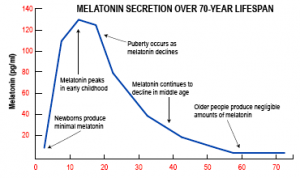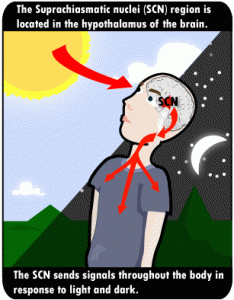We are living in an environment that puts emphasis on quality control, and companies around us take pride in their high quality products, supervised by the FDA. This is how it ideally should be. But is it really? Unfortunately not!
I read the headlines about lipsticks on April 4, 2014 and could not believe it!
When it comes to skin care or cosmetic products, things start to get scary. Skin is not a barrier, but it is an organ of our body. From skin cream and ointment applications in medicine it is known that pharmaceutical compounds can be applied to the skin, and this way the body can readily absorb active substances.
When it comes to cosmetics, the skin areas to which cosmetics are applied have softer skin, for example the mouth. The vulnerable skin of the lips can readily absorb any chemical substance, and this is where health concerns get even more serious.
In 2010 as the above link shows the FDA determined that all of the “400 lipsticks tested had traces of lead in them, ranging from 0.9 to 3.06 ppm. Another study from California noted that there were other toxic metals in lip sticks and lip glosses containing chromium, cadmium, manganese, aluminum in addition to lead. Even to the unconcerned this sounds like a precarious cocktail of noxious substances! On June 1, 2013 I wrote a blog about toxins in the bathroom. I mentioned the dirty dozen of chemicals that repeatedly are found in cosmetics. With this new information of traces of lead still being in cosmetics, more so than previously reported, women need to be more careful about the choice of lipsticks that they are using.
1.History of lipsticks:
This overview explains that the long-lasting lipstick was only invented around the 1950’s (“Sticks on you, not on him” was the slogan).
Traces of lead were often recorded, but not really thought to be that dangerous. The thinking of the FDA at that time was that children needed to be protected from lead in house paints, but nobody mentioned that lead was part of the red pigment and therefore had to be part of a lipstick. The FDA did know this, but the concentration was supposed to be so small and absorption was thought to be negligible, so considered to be safe for an adult.
2. Evidence of considerable absorption of lead:
We know from several studies summarized in this link that various components of cosmetics including lipsticks and lip-glosses get absorbed through the skin. Lead is no exception to this. A 2011 study showed in children in Africa that lead-containing cosmetics for tribal ceremonies in children had higher lead concentrations in their blood than children who did not use these cosmetics.
When doing a PubMed review on the subject I came across a very interesting study: In India there is a practice that parents apply kajal (also called kohl or surma cosmetic) around their eyes, on old traditional practice. Unfortunately this is a lead-containing cosmetic, which is absorbed into the blood and can cause lead poisoning. According to this ancient belief this application of cosmetics around the eyes would keep their eyes cool and clean and is supposed to improve vision, strengthen the eyes and prevent eye diseases. None of these belief are compatible with Western medicine (although a lot of the Ayurveda medicine is valid).
In another 2010 study done in the mountainous Aseer region in the Southwest of Saudi Arabia here there is pristine air quality, 176 pregnant patients with a single baby were followed to see whether there was an effect with regard to lead poisoning in the offspring. Two groups of women were identified, those with lead levels of more than 200 mcg/L in the blood and another group with less than 200 mcg/L. The researchers noted that there was no difference with regard to prematurity, size of the baby or premature rupture of membranes (premature birth).
The conclusion of this study was that there was significant absorption of lead from 100% lead sulfide eye cosmetic “kohl” only on those who used it. To my surprise nobody mentioned anything about the lead levels in the children, which is an example of compartmentalization of science. Common sense would dictate that these children who were at higher risk from mothers with over 200 mcg/L should have received chelation treatments to remove lead (we do this in Western medicine!).
3. Different lip sticks and lip glosses analyzed in Europe and in the US:
A European study showed that 31% of lipsticks and 4% of lip glosses tested positive for lead. All of them had less than 0.88 mg/kg of lead (less than 1 mg/kg). Pink lipstick or lip gloss (0.81 and 0.38mg/kg) tested lower than purple lipstick or lip gloss (0.88 and 0.37mg/kg) and red (0.58 and 0.25mg/kg), but purple tested the highest! I did not know that until now when I researched this. On average the tests show that the gloss has half the concentration of the lipstick.
Don’t be fooled by the difference in recommended safe levels in Canada (10 mg/kg) and Germany (20 mg/kg). Germany has a very powerful chemical industry with lobbyists that likely lead to this higher “safe” level. In Canada it is the Health Products and Food Branch of Health Canada. No country got it right so far: A zero tolerance (meaning a blood level of 0 mg/kg in babies and adults alike) is the only solution for humans. A little bit over a long time can lead to chronic chronic lead poisoning.
One other interesting tidbit for those who need to apply something to their lips:
The more expensive lipsticks had much less lead in it than the cheaper varieties (don’t buy the dollar store brands).
Contrast this to an FDA initiated study between 2009 and 2012, published in 2012 that showed that the average lipstick concentration in 400 lipsticks tested was 1.11 mg/kg, but the highest concentration was 7.19 mg/kg and 13 of them tested 3.06 mg/kg. Here is another review that shows more details (ppm equals mg/kg, so you can compare directly with the figures above. As stated before, in my opinion and that of toxicologists around the world who are the real experts in this a “0 mg/kg” level (no lead in the body) should be the acceptable norm!
Only organic lipsticks and lip-glosses are recommended, if you must wear any of such products. Here is a helpful blog that tells you more positive news (lead and chemical free products).
4. What are the effects of chronic low lead exposure?
Adult lead toxicity is not as common as in the past. Painters in the decades leading up to the 1970’s when laws became more stringent were the ones mostly affected (Ref.1). Keep in mind that more than 30 million tons of lead was released into the air in the US before the lead ban finally remedied this in the 1970’s. This phasing out was completed in 1995. The mean blood lead levels of Americans declined by 35% since. The EPA is monitoring lead levels in public water systems.
Lead is a nerve poison. It leads to fatigue, insomnia, irritability, lethargy, headaches, difficulty concentrating, memory loss, and tremor. It can also affect the nerves of the extremities, more so in the arms than the legs, which was significant in the past century among painters using lead paints. (“Upper extremity paresis” found in painters). Chronic lead poisoning targets the kidneys and the bone marrow. In the kidneys leakage of the filtration units, called glomeruli, leads to loss of microglobulins that can be measured in the urine among other tests. Above a level of 30 mcg/dL (this is the same as above 300 mcg/L) electrophysiological studies reveal often the ulnar nerve conduction is disturbed, which is the cause for the arm weakness in painters. The bone marrow toxicity can be seen in stippling of red blood cells and anemia develops subsequently. High blood pressure and fertility issues are also common (low sperm count in men, higher rate of spontaneous abortions and stillbirths in women). The gums around the teeth show lead lines (blue discoloration). I will not get into lead toxicity in children, as this is a big topic of its own. Needless to say symptoms are much worse as any pediatrician can tell you. It goes without saying that should you notice any of these symptoms, see your doctor and have appropriate tests done.
5. Treatment and prevention:
As we do not see acute lead poisoning as much as in the past, except sadly to say still in development countries and highly industrialized areas with lead emissions into the air, I like to emphasize the importance of prevention here.
a) If you absolutely must have make-up and/or lip sticks or lip gloss, at least go for the expensive, organic products. You owe it to yourself. However, having said that keep in mind that anything you put on your skin anywhere is absorbed to a certain percentage. So, why mess with your body’s metabolism? I really question this. For your skin you can use a product called “Youth serum” from LifeExtension, where only a few drops will suffice to cover your face and neck with a thin film. Within a few seconds this is absorbed into the skin and it will stimulate your skin to grow where wrinkles are, so the wrinkles flatten out in time.
b) Keep in mind that skin appearance is hormone dependent, males need testosterone as they age and women need bioidentical progesterone. The first link under point 2 above claims that progesterone would be cancer producing. This is not true: it is progestin, a synthetic copy of progesterone that does this. So, bioidentical progesterone in cosmetics would be cancer preventing in women (men should stay away from a woman who has applied this for at least two hours as skin transfer will block testosterone production). Worse still: if a manufacturer uses progestin (the synthetic version), the traces of it over a long period of time will act like xenoestrogens, which can cause breast cancer in the woman who uses such a product and through transfer can cause prostate cancer in a man.
c) If you insist on using chemicals on your skin, you may want to consider seeing a naturopathic physician who does intravenous chelation. Lab tests are available to assess the levels of heavy metals and toxins in your body. If the levels are creeping up, chelation treatments from time to time may be needed in people with measured elevations of lead levels in blood tests and/or urinary lead level elevations. Discuss this with your doctor. Removal of any accumulated mercury, lead, and cadmium or other heavy metals will be an option. I have summarized detoxification methods elsewhere.
Conclusion:
In conclusion, I think that it has to be carefully considered, how much use of lipstick application is necessary. Next the choice of a high quality product is of utmost importance. Taking all the factors together, its constant use cannot be recommended, especially since there is not only lead present, which is a known health hazard. Beside lead there are many other chemicals that get absorbed and their effects have not been adequately tested by the agencies.
More information on vitamins and detoxification: http://nethealthbook.com/health-nutrition-and-fitness/nutrition/vitamins-minerals-supplements/
References:
1. Shannon: Haddad and Winchester’s Clinical Management of Poisoning and Drug Overdose, 4th ed. Chapter 73, “Lead” by Michael W. Shannon, MD, MPH © 2007, Saunders
Last edited Nov. 7, 2014















